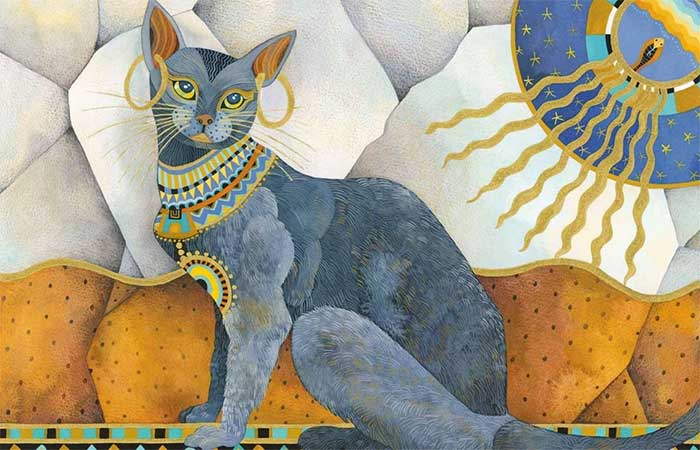Ancient Egyptians Worshipped Various Animal Species for Thousands of Years. Animals were revered for many reasons; for example, dogs represented protection and hunting skills.
However, cats were considered the most special species. Egyptians believed that cats were mystical creatures capable of bringing good fortune to their owners.
To honor these pets, wealthy families adorned them with jewels and fed them gourmet food. When cats passed away, they were often mummified.

Ancient Egyptians held cats in high esteem. (Image Source: National Geographic).
Alongside hieroglyphics, obelisks, and various geometric patterns, cats were also a hallmark of ancient Egyptian art, reflecting the unique status of these animals among the residents along the Nile River. Initially, ancient Egyptians kept cats as useful predators, but they gradually became symbols of deities and protection.
“Although it’s hard to say what the Egyptians thought due to the many changes over more than 3,000 years of history, generally speaking, ancient Egyptians did not worship animals. Instead, they viewed animals as representations of divine aspects,” said Julia Troche, an Egyptologist and Professor of History at Missouri State University.
Whether or not cats were worshipped as deities, they played an indispensable role in the lives of ancient Egyptians. The discovery of mummified cats in tombs alongside humans indicates their significant role in the afterlife according to Egyptian beliefs.
Throughout human civilization, ancient Egyptians regarded cats as companions with many benefits. After keeping cats as household pets, they desired to maintain that relationship even after death.
“Tombs are eternal homes after death,” explained expert Troche.
“In tombs, we see depictions of families, their greatest achievements, and what they loved. Therefore, the presence of cats here speaks to their role in the daily lives of ancient Egyptians and reflects their desire for these animals to accompany them in the afterlife.”
The presence of cats was not only depicted through paintings in tombs. Some cats were mummified and placed in their owner’s tomb, according to the Carnegie Museum of Natural History.
In addition to catching mice, snakes, and other household pests, ancient Egyptians believed that cats possessed intelligence, agility, and strength.
Ancient Egyptians also believed that deities could take on different forms, including animals like cats.
“Deities could inhabit cats. That is why they were mummified, and there was even a whole industry dedicated to breeding and mummifying cats in ancient Egypt.”
As a way to express their grief for deceased cats, cat owners would shave their eyebrows and continue to mourn until their eyebrows grew back. Ancient Egyptian artworks depict statues and paintings of various types of cats. Cats were so revered that those who harmed them, even accidentally, could face the death penalty.

















































